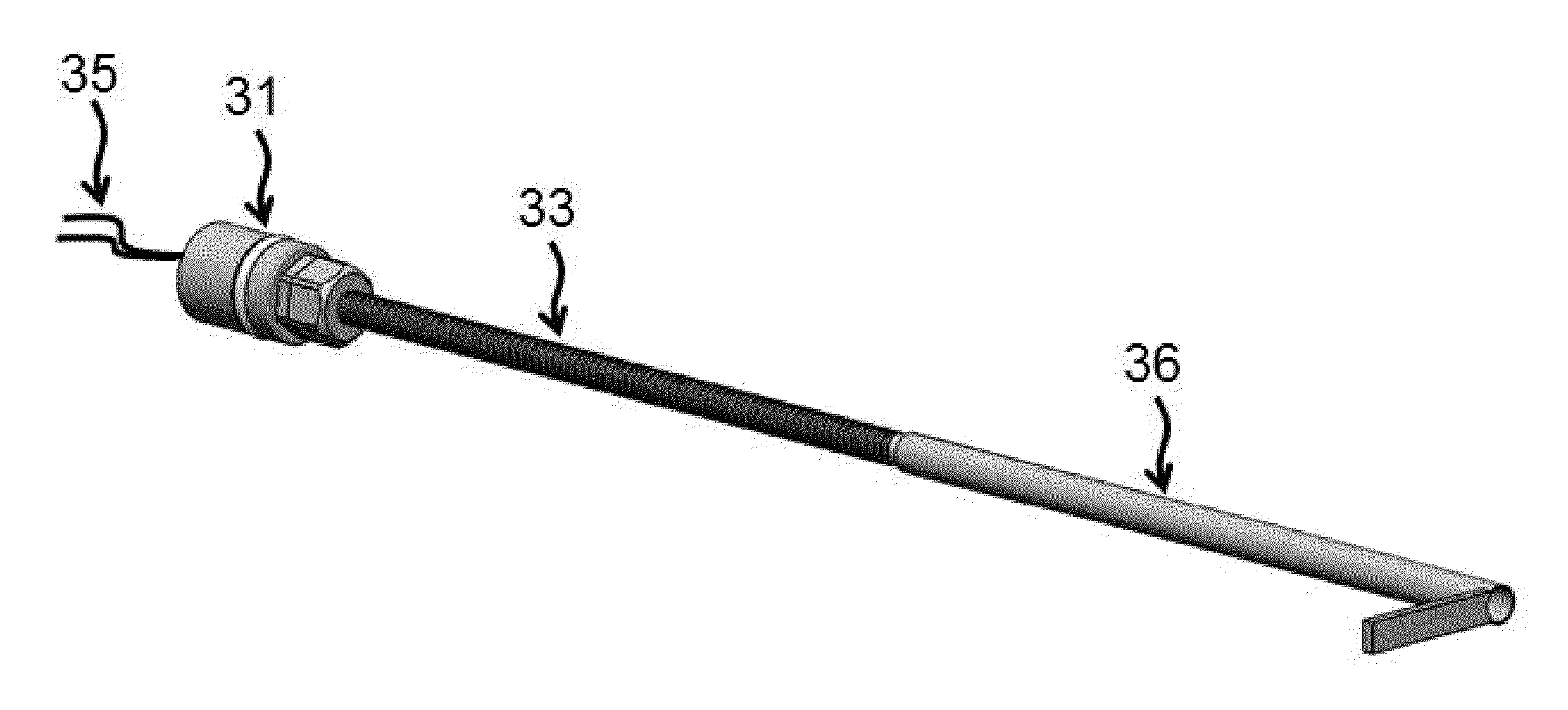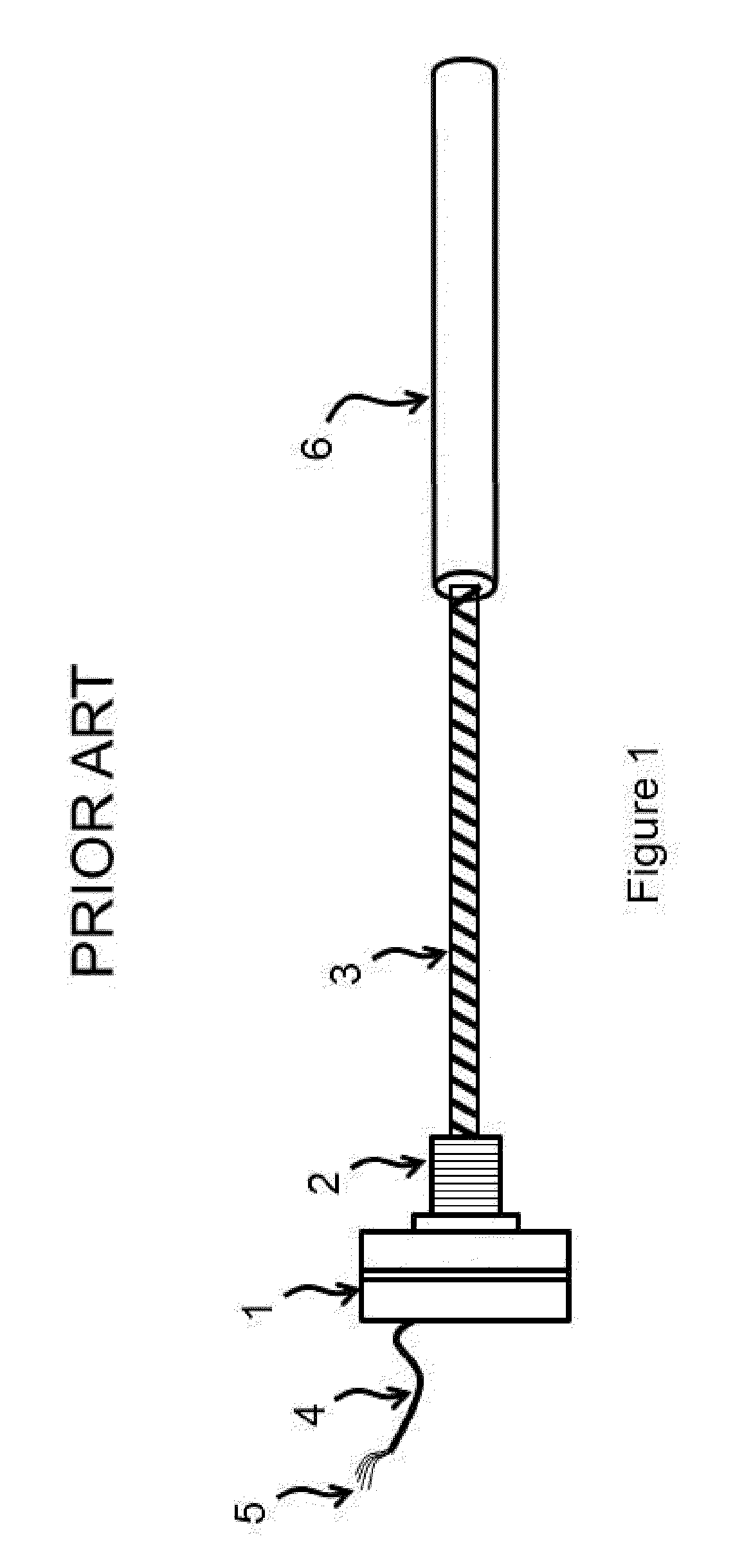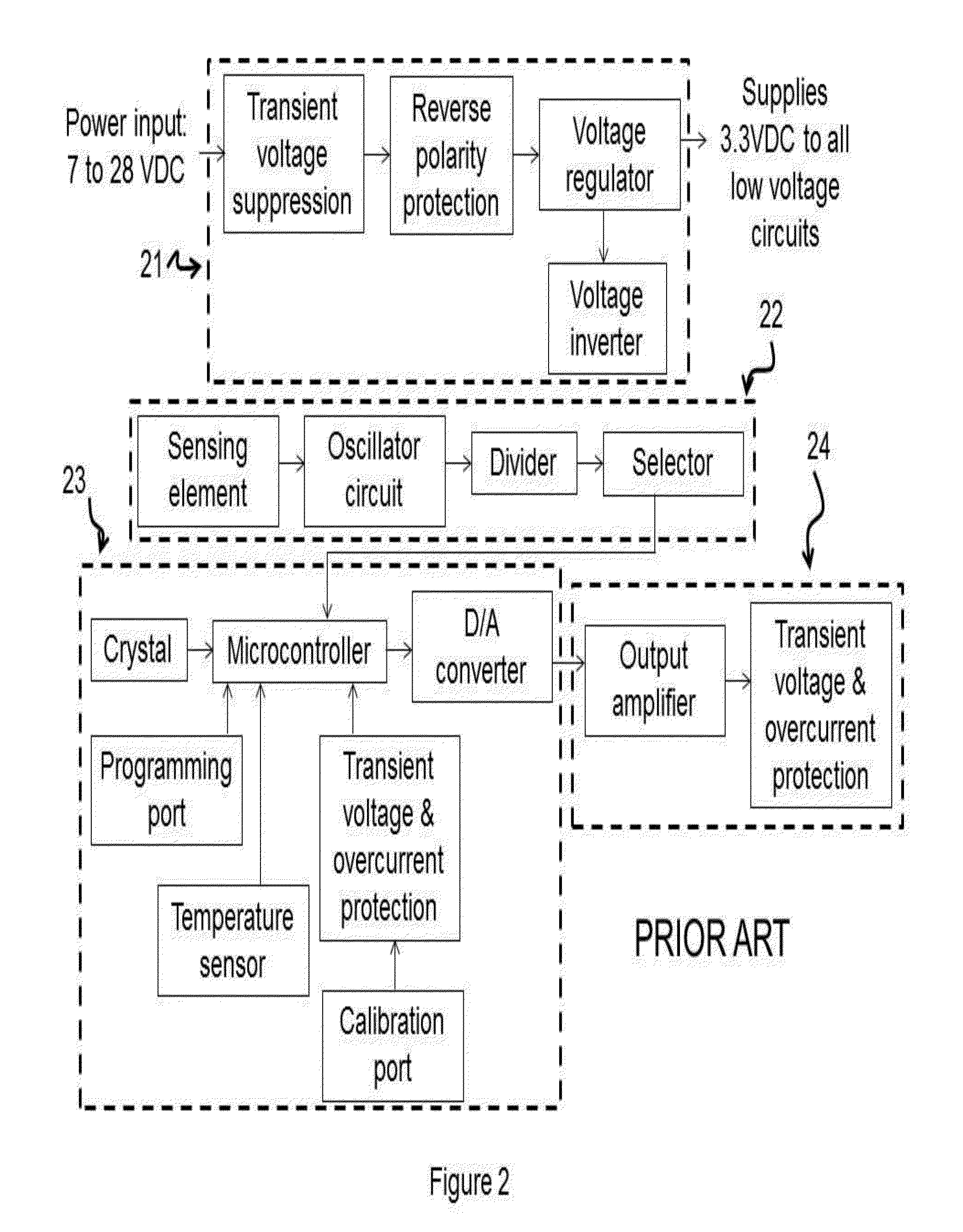Position sensing head with redundancy
- Summary
- Abstract
- Description
- Claims
- Application Information
AI Technical Summary
Benefits of technology
Problems solved by technology
Method used
Image
Examples
Embodiment Construction
[0025]In order to implement the first improvement of the invention, which is a sensing head, a simplified circuit is designed so that, if desired, only basic electronic components of the type that are easily found on the market with operating temperatures of 225° C. and higher may be used. The simplified circuit includes an oscillator coupled with a sensing element. The sensing element can be of a new design, or one that is already known in the art. The sensing element and oscillator provide a frequency that is representative of a measured position. The simplified circuit also includes a buffer to output the signal frequency. The combination of one or more oscillators and one or more buffers comprises the simplified electronic module.
[0026]FIG. 1 is a Prior Art electromagnetic linear position sensor in accordance with U.S. Pat. No. 7,216,054. The housing (1) encloses an electronics module (not shown), which is usually manufactured as a printed circuit board having electronics compon...
PUM
 Login to View More
Login to View More Abstract
Description
Claims
Application Information
 Login to View More
Login to View More - R&D
- Intellectual Property
- Life Sciences
- Materials
- Tech Scout
- Unparalleled Data Quality
- Higher Quality Content
- 60% Fewer Hallucinations
Browse by: Latest US Patents, China's latest patents, Technical Efficacy Thesaurus, Application Domain, Technology Topic, Popular Technical Reports.
© 2025 PatSnap. All rights reserved.Legal|Privacy policy|Modern Slavery Act Transparency Statement|Sitemap|About US| Contact US: help@patsnap.com



